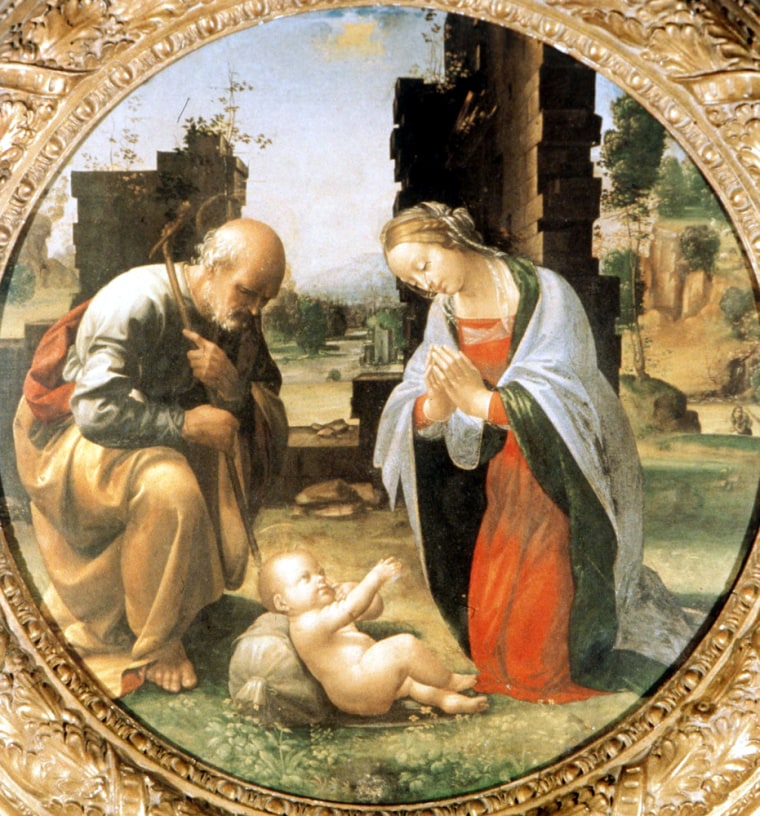A fingerprint and stylistic touches uncovered during restoration of a disputed Renaissance masterpiece raises the possibility it may have been painted by Leonardo da Vinci, who sometimes left his mark on works as a kind of signature, restorers said Tuesday.
“The Adoration of the Christ Child” in Rome’s Galleria Borghese has for decades been attributed to Fra Bartolomeo, but scholars have never been confident of authorship. Through the centuries, candidates have included Raphael, Ghirlandaio and Lorenzo di Credi.
Chief restorer Elisabetta Zatti said she found the fingerprint toward the end of the yearlong restoration that ended in November. That, along with stylistic similarities, made scholars think of Leonardo.
Matching fingerprints
Photos of the “Adoration,” believed to have been painted in the late 15th century or early 16th century, will be flown March 1 to Krakow, Poland, to compare its fingerprint with the one on the Leonardo masterpiece “Lady with an Ermine.”
“Once it was restored, a kind of yellowish halo could be seen in the sky in the upper left,” the chief restorer Elisabetta Zatti said Tuesday, describing the fingerprint she discovered on the painting Italians call the “Tondo” — or “Round” — after its circular shape.
The restoration uncovered hitherto hidden details of the painting. They include Leonardo’s typical symbolism such as wild primrose, which represents resurrection, and the blue veronica flower, symbol of the eyes of the Virgin Mary.
Perhaps most strikingly, the restoration work revealed that the Virgin Mary had the large and somewhat masculine hands that are a hallmark of many female figures in his work.
Mark of the creator
Zatti said that if the fingerprint turns out to be Leonardo’s, the painting probably could be attributed to him.
“It’s difficult to imagine he would have left it on the painting of someone else,” she said.
Alessandro Vezzosi, the director of a museum dedicated to Leonardo near Florence who was not involved in the restoration, said the discovery of the fingerprints was interesting, but cautioned that more research is needed to give a definite attribution.
“Fingerprints are very useful, and Leonardo’s paintings and manuscripts are full of them,” Vezzosi said. “If that is his fingerprint, it means at least that he has worked on that painting.”
